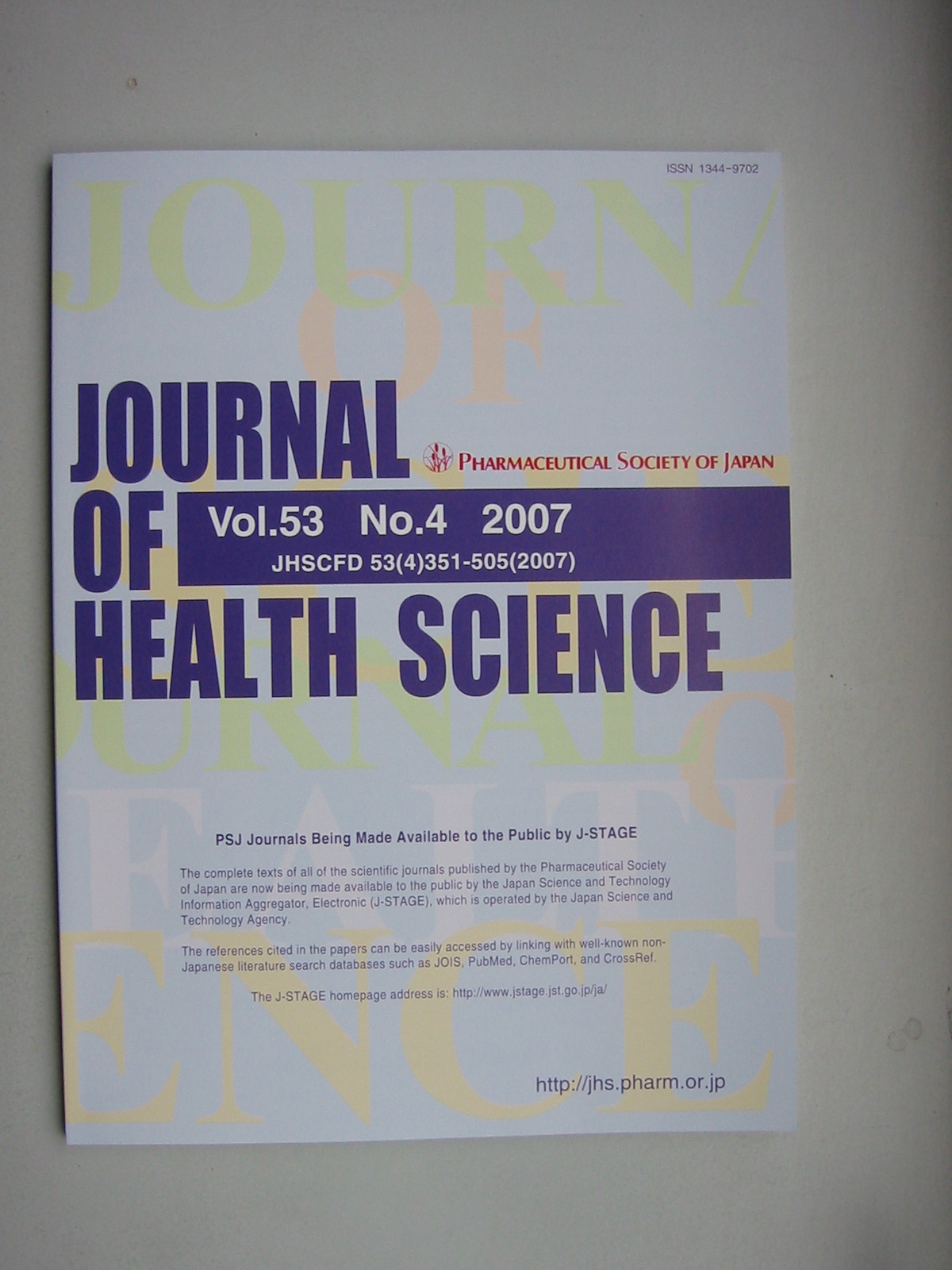Volume 51, Issue 2
Displaying 1-24 of 24 articles from this issue
- |<
- <
- 1
- >
- >|
REVIEW
-
2005Volume 51Issue 2 Pages 107-114
Published: 2005
Released on J-STAGE: April 01, 2005
Download PDF (405K)
REGULAR ARTICLES
-
2005Volume 51Issue 2 Pages 115-121
Published: 2005
Released on J-STAGE: April 01, 2005
Download PDF (63K) -
2005Volume 51Issue 2 Pages 122-129
Published: 2005
Released on J-STAGE: April 01, 2005
Download PDF (667K) -
2005Volume 51Issue 2 Pages 130-137
Published: 2005
Released on J-STAGE: April 01, 2005
Download PDF (779K) -
2005Volume 51Issue 2 Pages 138-146
Published: 2005
Released on J-STAGE: April 01, 2005
Download PDF (138K) -
2005Volume 51Issue 2 Pages 147-154
Published: 2005
Released on J-STAGE: April 01, 2005
Download PDF (172K) -
2005Volume 51Issue 2 Pages 155-160
Published: 2005
Released on J-STAGE: April 01, 2005
Download PDF (317K) -
2005Volume 51Issue 2 Pages 161-171
Published: 2005
Released on J-STAGE: April 01, 2005
Download PDF (156K) -
2005Volume 51Issue 2 Pages 172-177
Published: 2005
Released on J-STAGE: April 01, 2005
Download PDF (183K) -
2005Volume 51Issue 2 Pages 178-184
Published: 2005
Released on J-STAGE: April 01, 2005
Download PDF (392K) -
2005Volume 51Issue 2 Pages 185-190
Published: 2005
Released on J-STAGE: April 01, 2005
Download PDF (718K) -
2005Volume 51Issue 2 Pages 191-196
Published: 2005
Released on J-STAGE: April 01, 2005
Download PDF (69K)
RESEARCH LETTERS
-
2005Volume 51Issue 2 Pages 197-201
Published: 2005
Released on J-STAGE: April 01, 2005
Download PDF (83K) -
2005Volume 51Issue 2 Pages 202-206
Published: 2005
Released on J-STAGE: April 01, 2005
Download PDF (483K) -
2005Volume 51Issue 2 Pages 207-211
Published: 2005
Released on J-STAGE: April 01, 2005
Download PDF (69K) -
2005Volume 51Issue 2 Pages 212-219
Published: 2005
Released on J-STAGE: April 01, 2005
Download PDF (247K) -
2005Volume 51Issue 2 Pages 220-223
Published: 2005
Released on J-STAGE: April 01, 2005
Download PDF (52K)
RAPID COMMUNICATIONS
-
2005Volume 51Issue 2 Pages 224-232
Published: 2005
Released on J-STAGE: April 01, 2005
Download PDF (793K) -
2005Volume 51Issue 2 Pages 233-236
Published: 2005
Released on J-STAGE: April 01, 2005
Download PDF (49K) -
2005Volume 51Issue 2 Pages 237-241
Published: 2005
Released on J-STAGE: April 01, 2005
Download PDF (129K) -
2005Volume 51Issue 2 Pages 242-247
Published: 2005
Released on J-STAGE: April 01, 2005
Download PDF (206K) -
2005Volume 51Issue 2 Pages 248-252
Published: 2005
Released on J-STAGE: April 01, 2005
Download PDF (116K) -
2005Volume 51Issue 2 Pages 253-256
Published: 2005
Released on J-STAGE: April 01, 2005
Download PDF (1048K) -
2005Volume 51Issue 2 Pages 257-262
Published: 2005
Released on J-STAGE: April 01, 2005
Download PDF (201K)
- |<
- <
- 1
- >
- >|
